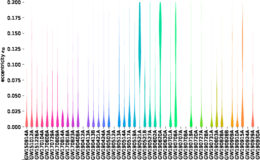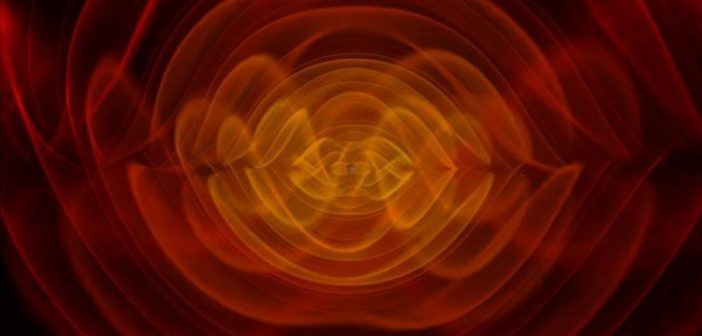How do binary black holes form? Are the two components born together as stars, or do they find each other only after evolving into black holes? Gravitational waves may hold the answer.
Imprints of Formation History
Gravitational-wave detectors like the Laser Interferometer Gravitational-Wave Observatory (LIGO) and the Virgo interferometer have allowed us to eavesdrop on the mergers of black holes across the universe. With dozens of black hole mergers detected so far, we can start to question how two black holes end up in a binary system in the first place.
Two main pathways are expected. In the first scenario, two stars, coupled since their formation, engage in a slow gravitational dance over billions of years as they evolve into black holes, grow closer, and merge. In the second scenario, two black holes, born apart, become gravitationally entangled in a dynamic environment like a dense star cluster.

An idealized example of gravitational wave forms for a binary black hole system with perfectly circular orbits (e=0; black) and very elongated orbits (e=0.5; red). Click to enlarge. [Abbott et al. 2019]

Violin plot showing probability distributions for the eccentricities of the 26 binary black hole mergers analyzed in this study and 10 mergers that were previously analyzed. The wider the violin, the more likely the eccentricity. Most events are weighted toward e=0, though two events (GW190620A and GW190521A) show clear signs of nonzero eccentricity. Click to enlarge. [Romero-Shaw et al. 2021]
Examining Eccentricity
A team led by Isobel Romero-Shaw (Monash University and ARC Center of Excellence for Gravitational Wave Discovery, Australia) performed a statistical analysis of gravitational-wave signals from 26 binary black hole mergers in the LIGO/Virgo catalog to determine the most likely eccentricity — and therefore the most likely origin — for each merging system.
Romero-Shaw and collaborators found that while the majority of the events analyzed likely had circular orbits, two events showed clear signs of eccentricity, with 50% of their probability distributions falling above an eccentricity of 0.05. The team’s results suggest that 27% or more of the binary black holes in the LIGO/Virgo catalog formed dynamically, likely in a dense cluster environment.
Emerging Possibilities

Black hole binaries in young star clusters, like NGC 3293 shown here, may resemble those formed in dense clusters or isolated environments. [ESO/G. Beccari]
There’s still much to learn about merging black holes, and luckily our gravitational-wave detectors are hard at work. Hopefully, future detections of black hole mergers help us discern how these systems form!
Citation
“Signs of Eccentricity in Two Gravitational-wave Signals May Indicate a Subpopulation of Dynamically Assembled Binary Black Holes,” Isobel Romero-Shaw et al 2021 ApJL 921 L31. doi:10.3847/2041-8213/ac3138

